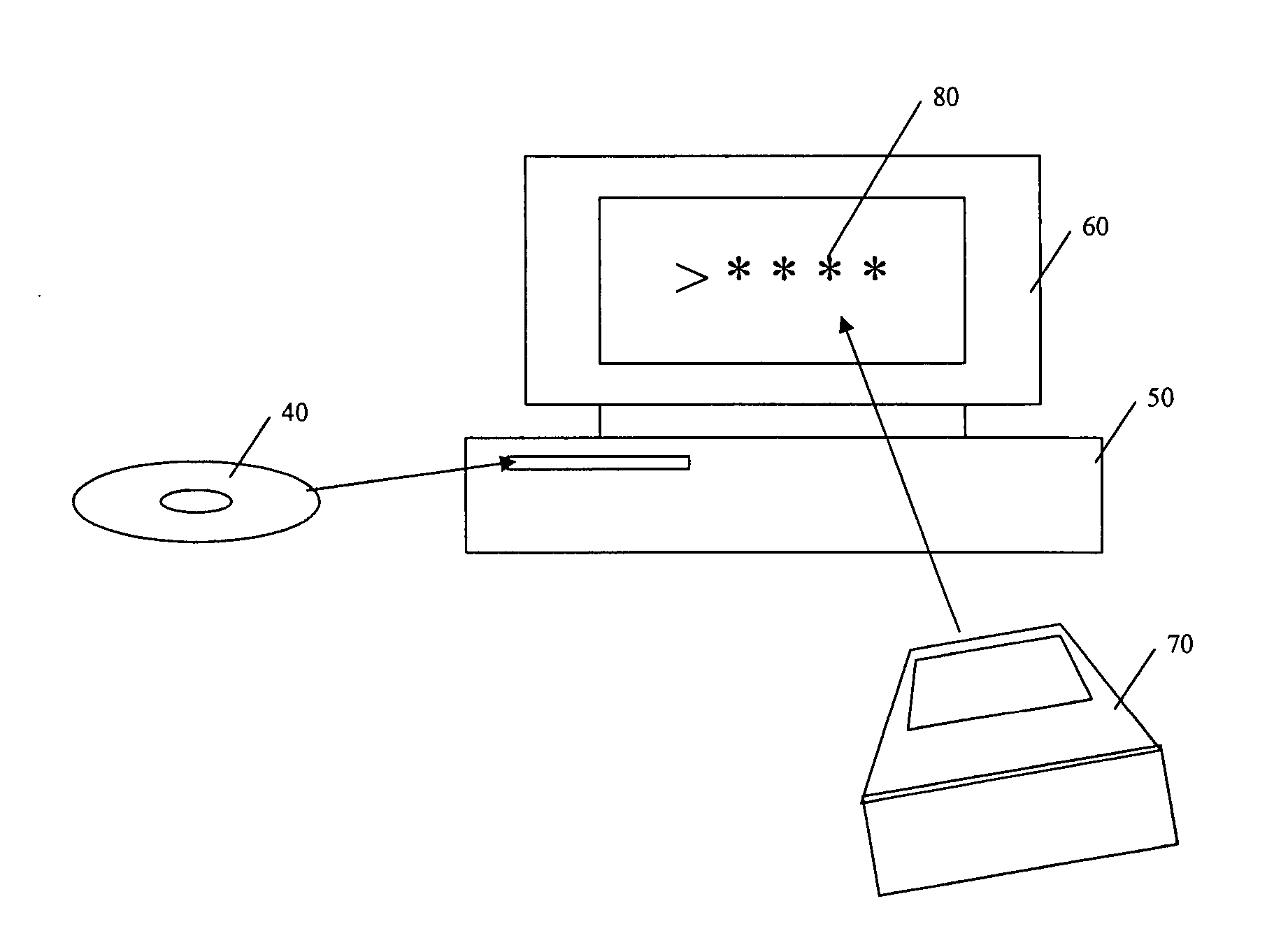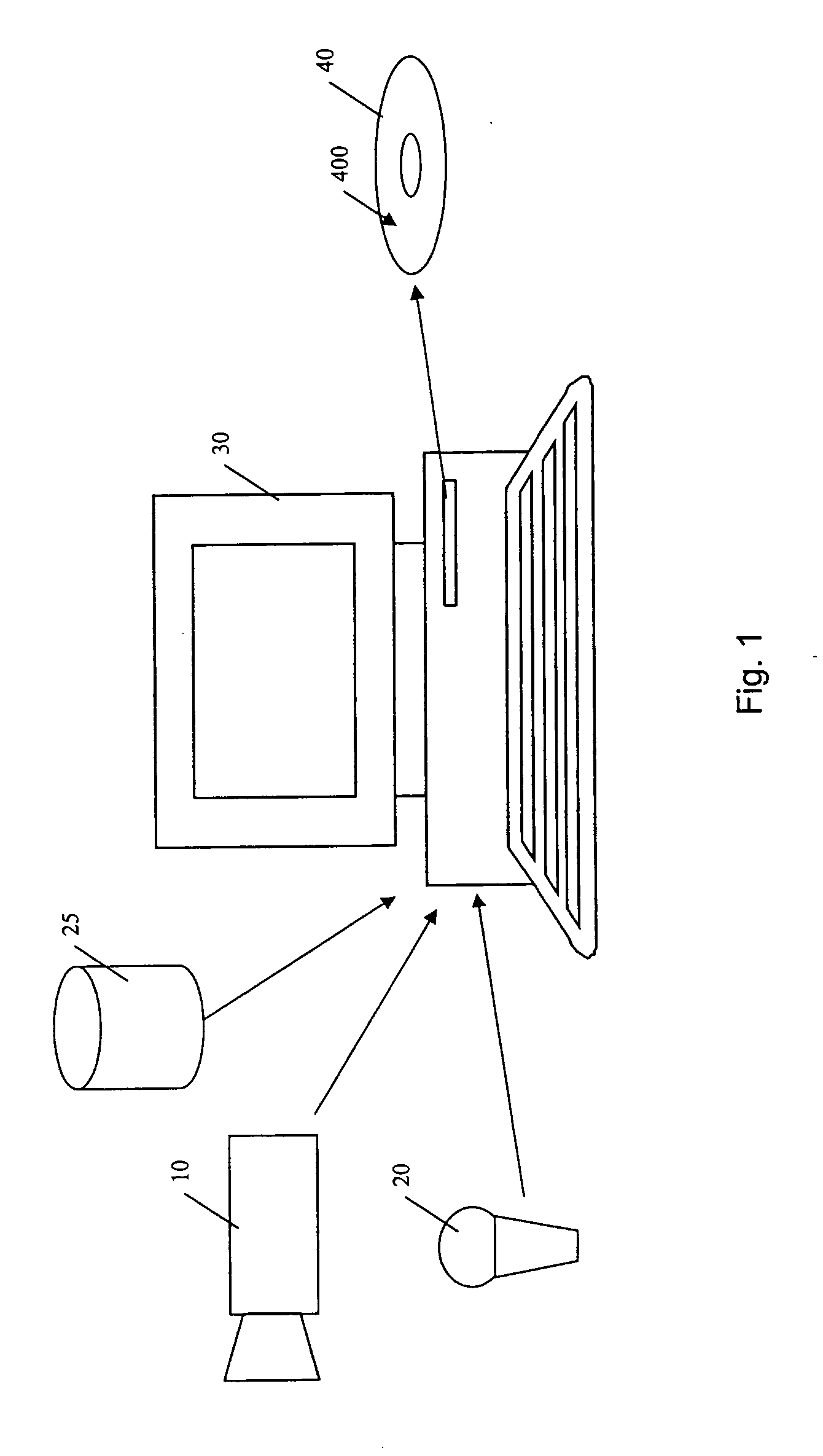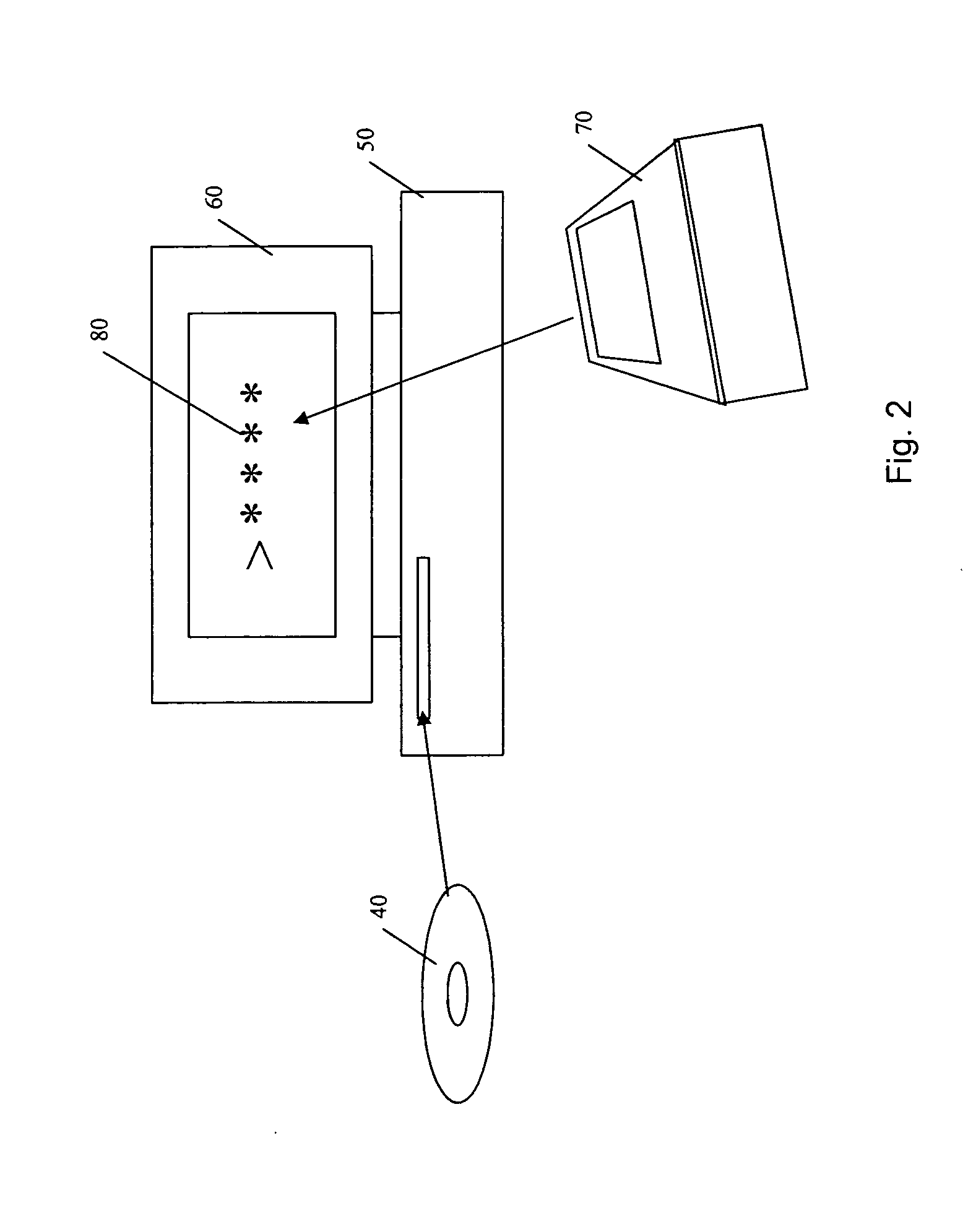Scrambled video streams in an audiovisual product
a technology of audiovisual products and video streams, applied in the field of audiovisual product scrambled video streams, can solve the problems of affecting the quality of audiovisual products, the inability to securely hold content, and the relative ease of viewing or otherwise accessing a stored audiovisual product, etc., and achieve the effect of restricting access to audiovisual products
- Summary
- Abstract
- Description
- Claims
- Application Information
AI Technical Summary
Benefits of technology
Problems solved by technology
Method used
Image
Examples
example 1
In a first example method, a single, fixed unlock code is used to unlock the disc content. This could be, for example, a four digit PIN. On screen, the user may be presented with an image of a numeric keypad and using the remote control navigation buttons (e.g. Up, Down, Left, Right and Enter) can key in the four digits. Preferably, as each digit is entered it is displayed on screen for confirmation to the user. Of course, many other input options are also applicable.
example 2
A characteristic of the first example method is that every user receives the same unlock code, and therefore a security weakness is that the unlock code could be given by one person to many others who would thereby subvert the access control. Using a pair of codes can enhance security as follows: 1. When prompting for the unlock code the disc displays an ‘identification code’ which could be, for example, a four-digit code chosen at random by the player at run time. 2. When the user purchases the unlock code he / she must first quote the identification code; for each possible identification code there is a corresponding unlock code. 3. The user enters the unlock code to access the disc content.
Many algorithms are available for generating matching pairs of security codes, such as public / private key pairs.
A characteristic of the second example method is that a new identification code will be generated for each session of playing the DVD disc and unlock codes are unique to each id...
example 3
The second example method can be modified to allow the identification code to be entered by the user using information that is either unique to that user or restricted to a small number of users. Examples are: 1. A ‘customer number’ allocated to the user which can be traced (suitable for corporate use, for example). 2. A credit card number of the customer (which the customer is unlikely to circulate to others).
Dependent upon the level of security required, these various options for receiving an access code or unlock code can be employed alone, or in any combination. The access control and content security provided by the present invention allows audiovisual products to be defined and produced in many exciting and commercially valuable forms which are at present not possible. Some examples are given in the following table:
TABLE 1ApplicationExampleSecurity RequiredDrip Feed - A disc is delivered toA newspaper publisher providesSecurity level is relatively low - itusers and cont...
PUM
| Property | Measurement | Unit |
|---|---|---|
| size | aaaaa | aaaaa |
| destination structure | aaaaa | aaaaa |
| structure | aaaaa | aaaaa |
Abstract
Description
Claims
Application Information
 Login to View More
Login to View More - R&D
- Intellectual Property
- Life Sciences
- Materials
- Tech Scout
- Unparalleled Data Quality
- Higher Quality Content
- 60% Fewer Hallucinations
Browse by: Latest US Patents, China's latest patents, Technical Efficacy Thesaurus, Application Domain, Technology Topic, Popular Technical Reports.
© 2025 PatSnap. All rights reserved.Legal|Privacy policy|Modern Slavery Act Transparency Statement|Sitemap|About US| Contact US: help@patsnap.com



